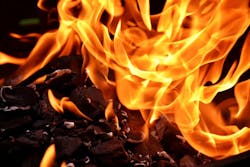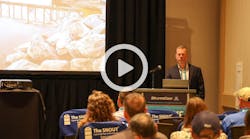Slow Revegetation Leads to Continued Risk in Thomas Fire Burn Zone
An assessment by the Watershed Task Force found that slow vegetation regrowth and watershed recovery in the wake of the Thomas fire leaves Montecito, Calif., and surrounding communities in continued risk for mudslides and flooding during the next few years. The assessment found that that below average soil recovery and vegetation growth in the Thomas fire area contributes to high risk. A dry winter, late rains and soil damage from the recent wildfire are all contributing factors to the damage, according to the assessment presented May 2, 2018, to the Santa Barbara County Board of Supervisors.
The task force is composed of a variety of teams, including the U.S. Forest Service’s Burn Area Emergency Response (BAER) team, Cal Fire’s Watershed Emergency Response Team (WERT), the California Geological Survey, the State Department of Water Resources and California Water Boards, as reported by The Santa Maria Times. Members of the Watershed Task Force began work in the immediate aftermath of the fire, while some sections were still burning even, identifying areas of risk, predicting potential flows and assessing growth. The group was key in identifying crucial cleanup locations prior to mudslides and flooding.
“We’re looking at a slow recovery–slower than normal,” Kevin Cooper, leader of the BAER team said. “Normally, we’d see up to 50, 60, 70% groundcover by now. But because of the weather patterns and because of lack of rain, essentially, we’re not seeing great recovery. 5-10% is what we see out there.”
For California residents near the Whittier fire, the news is more optimistics. Revegetation is 25-50% in that area, providing much needed protection from future fires, floods and mudslides. Moving forward, the task force hopes to have a risk-assessment map completed this upcoming summer. It will be up to local officials, storm water and erosion control experts to help the land recover through revegetation and smart erosion control strategies.


